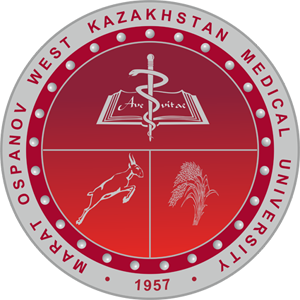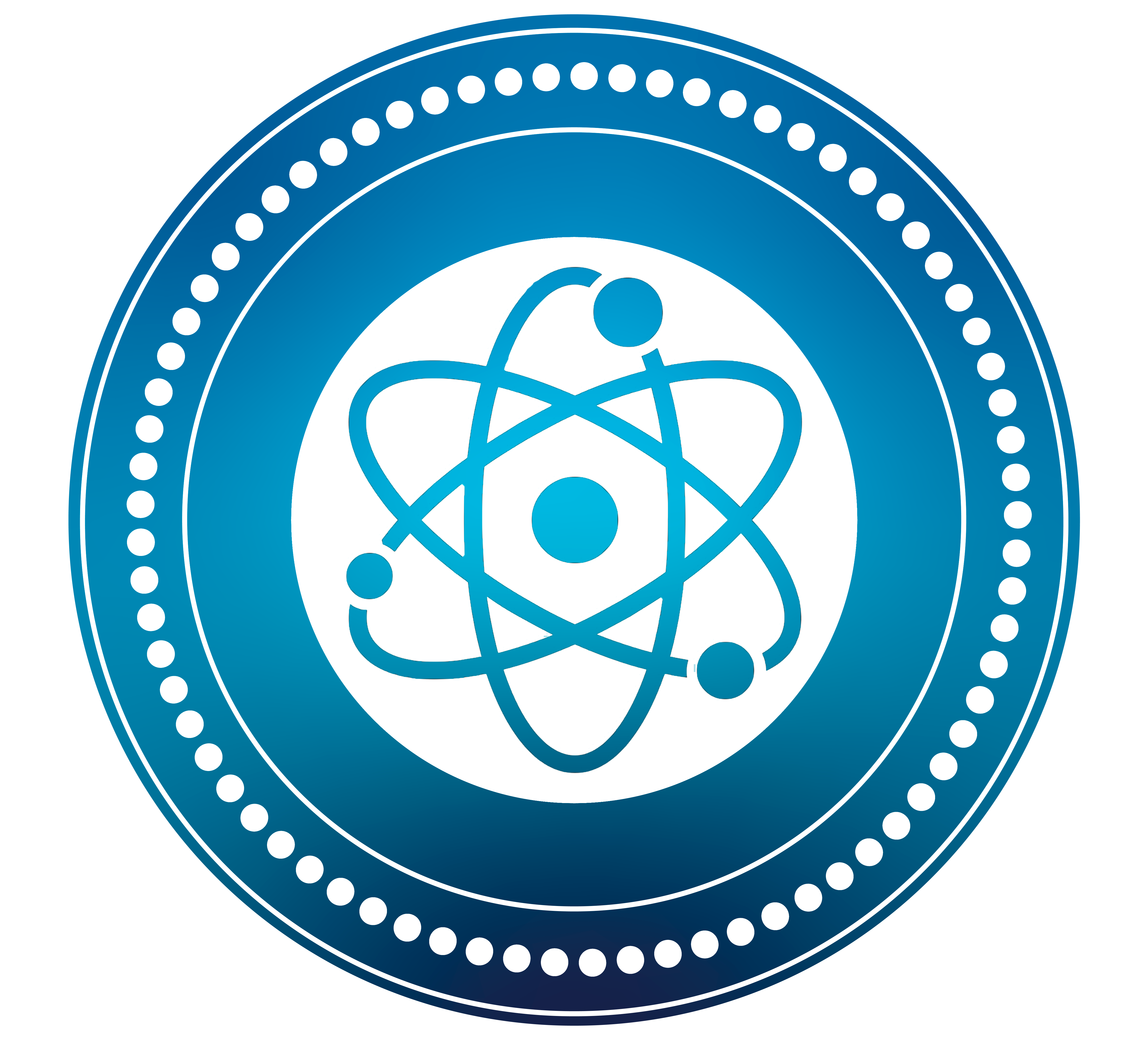Earlier the results of the dissertation work obtained by the applicant on the topic “The state of mineral density and features of bone tissue metabolism in adolescents of Western Kazakhstan”, among conventionally healthy adolescents, using osteodensitometry, a decrease in bone mineral density (osteopenic syndrome) was revealed in 70% of the examined (Z-score – 2.0 ± 0.5). Also, the average vitamin D deficiency among adolescent girls compared with the boys surveyed indicates a consideration of the state of bone metabolism, including a decrease in bone mineral density, which was a prerequisite for the development of the idea of the planned project [1].
Today, one of the urgent problems of pediatric and adolescent gynecology is dysmenorrhea [2].
Teenage girls with dysmenorrhea represent a high risk group for menstrual dysfunction and the formation of reproductive system pathology [3].
Dysmenorrhea is a difficult menstrual expiration, and in clinical practice it implies painful menstruation, which is accompanied by endometrial rejection during menstruation, a cyclically recurring pain syndrome [4].
Dysmenorrhea is the occurrence of severe pain in the lower abdomen of a cramping character, which may be accompanied by vomiting, headache, back pain, diarrhea, and fatigue during menstruation. Primary dysmenorrhea is characterized as pain resulting from excessive abnormal contraction of the uterus, not palpable on clinical examination, lesions in the small pelvis. Primary dysmenorrhea usually occurs a year or two after menarche. Menstrual pain starts a few hours before or during menstrual bleeding and lasts 2-3 days. The most severe pain occurs in the first 24–36 hours of menstruation. Consistently, from the above characteristics, we chose the inclusion and exclusion criterion among the surveyed adolescent girls in our study, and this makes it possible to make an accurate representative sample.
Based on the results of several studies conducted, it should be noted that severe menstrual pain associated with primary dysmenorrhea affects the quality of life depending on the overall health.
According to the WHO, up to 94% of girls aged 10–20 and 8.8% of women aged 19–41 suffer from menstrual pain. Dysmenorrhea often significantly reduces the quality of life and can even be the reason for absence from school or work [5].
According to a study conducted by the authors of the Maulana Azad Medical College (New Delhi, India), dysmenorrhea was detected in 67.2% of girls aged 13 to 19 years who had menarche at least a year (198 adolescent girls) [6].
The frequency of occurrence of dysmenorrhea is diverse, high 35-92% and 8-80%, but in Russian adolescents in a wide range it ranges up to 45-93%, and in women of reproductive age in the United States, 50% is observed [7].
Dysmenorrhea is a serious health problem for adolescents, as well as for practitioners, which negatively affects the daily activities and quality of life of adolescent girls. In adolescents, different courses of dysmenorrhea, which affects their lifestyle and cannot be treated, require professional attention and proper in-depth diagnosis of this disease.
In this regard, all health care practitioners in adolescent care should be more aware and actively involved in the early diagnosis and treatment of dysmenorrhea [8,9].
This project will present new knowledge, in particular, about the relationship of primary dysmenorrhea with pain sensitivity, quality of life and the mineral density and metabolism of certain bone tissue.
According to modern literature, large-scale work is underway with the problem of dysmenorrhea, using an example of treatment strategies and tactics [10].
The expected results of this project will focus on a systematic review of the world literature on the benefits of early diagnosis methods used in physiology, gynecology and pediatrics.
There is evidence that the concentration of vitamin D is also considered an important predictor of this disease, which provides a prerequisite for identification the role of vitamin D in the pathogenesis of primary dysmenorrhea [11].
Many menstrual dysfunction problems are associated with sequential physiological events of puberty and can improve the effectiveness of its solution with the participation of health care practitioners.
The combination of hormonal, neurovegetative, metabolic, psycho-emotional disorders in dysmenorrhea requires a complex differentiated approach to early diagnosis and treatment to significantly reduce the frequency of this disease.
A randomized controlled research in the Department of Obstetrics and Gynecology (Afyon Kocatepe University Hospital, Turkey) found significant and positive correlations between vitamin D levels and visual analogue scale scores, and a significant decrease in serum vitamin D levels in patients with dysmenorrhea indicates a possible role for vitamin D deficiency in primary dysmenorrhea in women aged 18-25 years [12].
An observational study by Turkish authors found a significant and negative correlation between vitamin D and dysmenorrhea-related symptoms. Vitamin D replacement therapy resulted in a significant improvement in symptoms in women in the 18–30 age group [13].
According to Iranian scientists, high-dose vitamin D supplementation has been shown to reduce the prevalence of premenstrual syndrome (PMS) and dysmenorrhea, as well as have a positive effect on the physical and psychological symptoms of PMS [14,15].
On the problem of vitamin D deficiency, 50 scientific articles were analyzed, despite the fact that the effect of vitamin D deficiency on the health of children and adolescents has been studied for a long time, information about the role of vitamin D in the formation of menstrual function in puberty girls is scant and ambiguous [16,17].
Vitamin D plays a critical role in sexual development, possibly due to its effects on calcium homeostasis, cyclical fluctuations in sex steroid hormones, or bone mineral density and metabolism [18,19].
We will not only show the multifactorial effects of primary dysmenorrhea in adolescent girls, but also propose future research areas and future research directions for researchers regarding bone metabolism and the relationship between osteopenic syndrome [20].
Health care providers working with young people should be involved in a complex consideration to menstrual issues in adolescence and sexual development. Thus, psychological growth is discussed as well as important aspects of puberty. Even in this burgeoning age of medical technology, a thorough medical history and hip examination remains the basis for any assessment of these adolescent girls.
At the same time, under the influence of these changes, from various of the above facts, the therapeutic and diagnostic effect of vitamin D, from the relationship with respect to the structure at the genetic level can be justified by a comprehensive assessment of these changes with a forecast for the presence of bone mineral density.
2.2. The purpose of the project: Increasing the efficiency of research and early diagnosis of the role of geno-phenotypic features of bone metabolism and bone mineral density in adolescent girls with primary dysmenorrhea.
- Bibliography
- Amanzholkyzy A. Nurgaliyeva R. Kaldybayeva A. Biochemical variability of vitamin d receptor (Vdr) gene and its relationship with bone mineral density in children of the western region of the republic of kazakhstan . Research Journal of Pharmacy and Technology volume 12. Issue 2. 2019. Pages 735-740 DOI: 10.5958/0974-360X.2019.00130.6
- Bulletin of the World Health Organization Issue 87, Number 5, May 2009
- The concept of the state program for improving the health of the population for 2020-2025. May 10, 2019 Republican Center for Healthcare Development, Nur-Sultan
- Al-Jefout M.I., Black K., Luscombe G., Tokushige N. et al. Myometrial and Endometrial Innervational of women with benign gynecological disease. 11th World Congress on Endometriosis, 4—7 september, 2011; 1—41.
- De Sanctis V, Soliman A, Bernasconi S, Bianchin L, Bona G, Bozzola M, Buzi F, De Sanctis C, Tonini G, Rigon F, Perissinotto E. Primary Dysmenorrhea in Adolescents: Prevalence, Impact and Recent Knowledge. Pediatr Endocrinol Rev. 2015 Dec;13(2):512-20.PMID: 26841639 Review.
- Sh.M. Saduakasova, G. Zh. Zhatkanbaeva, G.M. Nesipbaeva The effectiveness of treatment of dysmenorrhea in adolescent girls Vestnik KazNMU, №4 – 2014, pp. 29-31.
- Stella Iacovides 1, Ingrid Avidon 2, Fiona C Baker 3 What we know about primary dysmenorrhea today: a critical review Nov-Dec 2015;21(6):762-78. PMID: 2 6346058DOI: 10.1093/humupd/dmv039
- S.F. Nasyrova, F.F. Badretdinova, A.M. Ziganshin, E.V. Kulavsky Prevention of reproductive health disorders in adolescent girls with primary dysmenorrhea. Medical messenger of Bashkortostan. Volume 12, No.5 (71), 2017. P. -42-46.
- N. V. Bashmakova,T. V. Lisovskaya &V. Y. Vlasova Pathogenetic role of vitamin D deficiency in the development of menstrual dysfunction in pubertal girls: a literature review Journal Gynecological Endocrinology Volume 33, 2017 – Issue sup1: Factors of Endocrine and Reproductive Health Pages 52-55 https://doi.org/10.1080/09513590.2017.1404235
- Ashraf Moini,Tabandeh Ebrahimi,Nooshin Shirzad,Reihaneh Hosseini,Mania Radfar,Fatemeh Bandarian, show all The effect of vitamin D on primary dysmenorrhea with vitamin D deficiency: a randomized double-blind controlled clinical trial Journal Gynecological Endocrinology Volume 32, 2016 – Issue 6 Pages 502-505 https://doi.org/10.3109/09513590.2015.1136617
- Osman Karacin 1, Ilknur Mutlu 2, Mesut Kose 1, Fatih Celik 1, Mine Kanat-Pektas 3, Mehmet Yilmazer 1 Serum vitamin D concentrations in young Turkish women with primary dysmenorrhea: A randomized controlled study Taiwan J Obstet Gynecol 2018 Feb;57(1):58-63. doi: 10.1016/j.tjog.2017.12.009.
- Hatice Kucukceran,Ozhan Ozdemir,Serkan Kiral,Dilek Sensoz Berker,Rabia Kahveci,Adem Ozkara, show all The impact of circulating 25-hydroxyvitamin and oral cholecalciferol treatment on menstrual pain in dysmenorrheic patients
Journal Gynecological Endocrinology Volume 35, 2019 – Issue 1 Pages 53-57 https://doi.org/10.1080/09513590.2018.1490407
- Afsane Bahrami,Amir Avan,Hamid Reza Sadeghnia,Habibollah Esmaeili,Maryam Tayefi,Faezeh Ghasemi, show all High dose vitamin D supplementation can improve menstrual problems, dysmenorrhea, and premenstrual syndrome in adolescents Journal Gynecological Endocrinology Volume 34, 2018 – Issue 8 Pages 659-663 https://doi.org/10.1080/09513590.2017.1423466
- Van Dyck FS. Genetics of osteoporosis in children / Van Dyck FS. // Endocr Dev. 2015; 28: 196-209. doi: 10.1159
- Williams KM. Update on Bone Health in Pediatric Chronic Disease / Williams KM.//Endocrinol Metab Clin North Am. 2016 Jun;45(2):433-41.
- Szadek LL. Identification, prevention and treatment of children with reduced bone mineral density /Szadek LL., Scharer K.// J Pediatr Nurs. 2014 September-October; 29 (5): e3-14. doi: 10.1016.
- Lien J. Pediatric orthopedic injuries: evidence-based management in the emergency department / Lien J. //Pediatr Emerg Med Pract. 2017 Sep;14(9):1-28.
- Vierucci F. Saggese G. Cimaz R. Osteoporosis in childhood Curr Opin Rheumatol 2017; 29 (5): 535-546. Doi: 10. 1097)
- Lasko, Catalano A, Benvenga C. Improvement in primary dysmenorrhea caused by a single oral dose of vitamin D: results from a randomized, double-blind, placebo-controlled study. Arch Intern Med 2012; 172: 366 – 7. [Crossref], [PubMed], [Web of Science ®], [Google Scholar]
- Radzinsky V.E. , Khamoshina M.B. , Arkhipova M.P. , Lychak N.V. Reproductive health of adolescents in Russia: statistics, problems and prospects for improvement. Gynekol Endocrinol 2014; 30: 64 – 9. [Taylor & Francis Online], [Web of Science ®], [Google Scholar]
- Sharma P, Malhotra C, Taneja DK, Saha R Problems related to menstruation amongst adolescent girls. Indian J Pediatr. 2008 Feb;75(2):125-9. doi: 10.1007/s12098-008-0018-5.PMID: 18334791
- Siyi Yu 1, Mingguo Xie 2, Shuqin Liu 2, Xiaoli Guo 1, Jin Tian 1, Wei Wei 1, Qi Zhang 1, Fang Zeng 1, Fanrong Liang 1, Jie Yang 1Resting-State Functional Connectivity Patterns Predict Acupuncture Treatment Response in Primary Dysmenorrhea Front Neurosci. 2020 Sep 8;14:559191. PMC7506136 DOI: 10.3389/fnins.2020.559191
- Somayeh Asgari 1, Zainab Alimoardi 2, Mohammad Ali Soleimani 2, Kelly-Ann Allen 3, Nasim Bahrami 4 The effect of psychoeducational intervention, based on a self-regulation model on menstrual distress in adolescents: a protocol of a randomized controlled trial Trials 2020 Aug 27;21(1):747. doi: 10.1186/s13063-020-04629-z.
- De Sanctis V, Rigon F, Bernasconi S, Bianchin L, Bona G, Bozzola M, Buzi F, De Sanctis C, Tonini G, Radetti G, Perissinotto E Age at Menarche and Menstrual Abnormalities in Adolescence: Does it Matter? The Evidence from a Large Survey among Italian Secondary Schoolgirls. Trials 2020 Aug 27;21(1):747. PMC7450926 DOI: 10.1186/s13063-020-04629-z.Indian J Pediatr. 2019 Jan;86(Suppl 1):34-41. doi: 10.1007/s12098-018-2822-x. Epub 2019 Jan 10.PMID: 30628040 Review.
- Expected results
Depending on the requirements of the tender documentation, the forms of implementing the project result may be:
Publication of articles in foreign peer-reviewed scientific journals within the framework of the project for the implementation of the result, 1 publication is planned, an article in a foreign peer-reviewed scientific journal, for example, Open Access Macedonian Journal of Medical Sciences in the Scopus database Percentile – 58; Cite Score – 0.38; https://www.id-press.eu/mjms/index complying with the requirements of the competition documentation for the proposed grant funding.
A detailed study of the above syndromes and features will allow practical health care practitioners to trace the relationship between changes in bone metabolism and gynecological status in adolescent girls, which will be presented in the form of a monograph as the next result in the planned implementation of the project.
The next form of implementing the project result will be obtaining title of protection and patenting the results obtained in the Kazakhstan patent office.
The dissemination of the results of the work to potential users is planned in the form of trainings or workshops to raise awareness of the genetic predisposition between bone metabolism in adolescent girls with dysmenorrhea.
Development of an algorithm for early diagnosis and methods of prevention of changes characteristic of osteopenic syndrome in primary dysmenorrhea in adolescent girls, based on the analysis of the obtained clinical and laboratory results.
The obtained research results make it possible to expand diagnostic methods in practical health care, such as determining bone mineral density using ultrasound osteodensitometry. For practitioners, the problem of choosing a comprehensive early diagnosis of osteoporotic changes in the child’s body is quite acute.
The development and implementation of an algorithm for early diagnosis to protect the menstrual health of adolescents and their relationship with bone mineral density will allow monitoring the state of bone metabolism in adolescents and sexual development of a growing organism as a whole.
The introduction of ultrasound osteodensitometry in state polyclinics in Aktobe city will allow more in-depth study of the problems of the spread of osteopenic syndrome, monitoring of preventive and therapeutic work with secondary dysmenorrhea.
The introduction of the results of research and development will significantly reduce and effectively solve the problems with menstrual dysfunction in adolescents, due to in-depth diagnosis and preservation of the optimal quality of life for the child population of Aktobe city. This circumstance allows us to regard this problem not only as medical, but also as social. In this regard, to improve the efficiency of early diagnosis and prevention, the problem of developing an algorithm using the above research methods is especially acute.
Based on an integrated approach of early diagnosis and prevention, data will be obtained that will open up an opportunity for commercializing the program, conducting master classes, seminars for employees of other medical organizations.
The implementation of the program for the scientific search for gene markers and polymorphisms associated with osteopenic syndrome for adolescent girls will allow the introduction and dissemination of preclinical diagnostic methods into clinical practice, as well as inform parents and children themselves with new knowledge
“Features of metabolism and state of mineral density of bone tissue in adolescent girls with primary dysmenorrhea” ![]()
THE RELATIONSHIP BETWEEN BODY MASS INDEX AND PRIMARY DYSMENORRHEA (literature review) ![]()



 Marat Ospanov West Kazakhstan Medical University
Marat Ospanov West Kazakhstan Medical University




